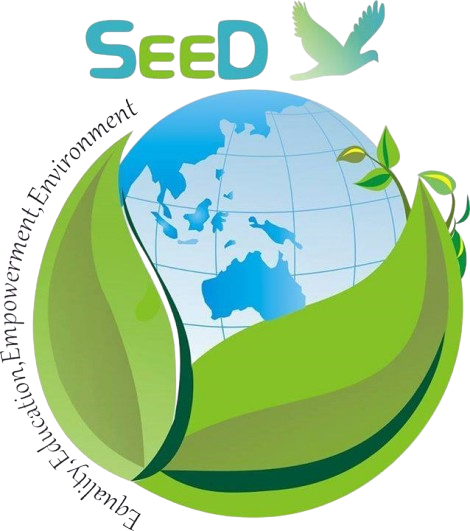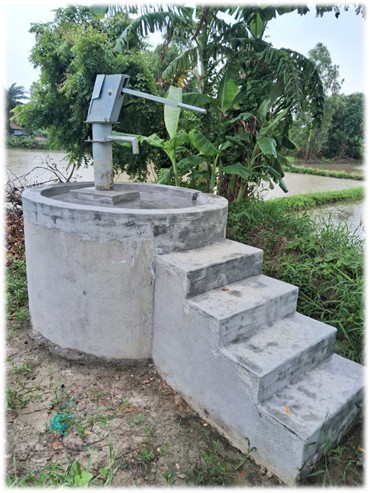






Ghoramara Island exemplifies the water insecurity crisis wrought by climate change in Indias coastal areas. Located in the mouth of the Ganges delta, this low-lying island has dramatically declined from 26 km² to about 6.7 km² due to sea level rise and erosion, with population reducing from tens of thousands to roughly 5,700 residents today. The remaining population consists predominantly of marginal farmers and fisherfolk, including 350 climate refugee families who are mainly landless laborers with very limited capacity to cope with environmental shocks. The islands water crisis is severely exacerbated by frequent disasters in the Bay of Bengal cyclone corridor. Multiple severe cyclones—Aila (2009), Bulbul (2019), Amphan (May 2020), and Yaas (May 2021)—have repeatedly breached embankments and flooded villages with storm surges, contaminating or damaging existing handpumps and ponds precisely when communities needed safe water most. Even annual monsoon flooding causes regular displacement and well contamination, forcing villagers to consume polluted water and leading to outbreaks of diarrhea and waterborne diseases. The interplay of climate hazards—rising seas, storm surges, erratic rainfall—has created a dire water security and public health emergency requiring urgent climate-resilient infrastructure. Any solution needed to address both chronic salinity issues through water source development and acute disaster impacts through resilient design and community preparedness. In response, SEED launched a comprehensive Climate-Resilient Water Security Project with BPCL CSR support, focusing on two key interventions designed for maximum disaster resilience. The first involved rejuvenating 7 critical ponds that had become silted and unusable due to stormwater runoff and saline encroachment. Each pond was re-excavated to remove accumulated silt and deepen water columns by 3 meters, significantly increasing freshwater storage capacity. Embankments were raised by 1-1.5 meters and reinforced using dredged soil and additional clay, with slopes stabilized through vetiver grass and local mangrove associates to prevent erosion. The second intervention installed 7 high-raised deep tubewells across seven villages, each mounted on raised concrete platforms 2.5 meters above ground—a signature climate-resilient feature ensuring wellheads stay above typical flood heights. Professional drillers bored each tubewell to depths of 300-370 meters, reaching below saline groundwater strata to extract fresher water from confined aquifers. High-grade PVC casing prevented collapse and sealed off upper salty layers, while water quality tests ensured acceptable salinity and contaminant levels. The methodology emphasized engineering solutions coupled with robust community participation through Water User Groups formation, WASH education campaigns, and stakeholder coordination with Ghoramara Gram Panchayat, Block Development Office, and government schemes like Jal Jeevan Mission and MGNREGS. Supporting activities included community mobilization through Swachhta Pakhwada campaigns involving school children in rallies and painting competitions, womens self-help groups in sanitation drives, and folk theatre spreading clean water messages. The projects integrated approach combined immediate infrastructure delivery with long-term institutional strengthening, creating both physical and social capital essential for sustained water security and disaster resilience in this climate-vulnerable island community.



Subscribe to the SEED Newsletter — and be part of the change!